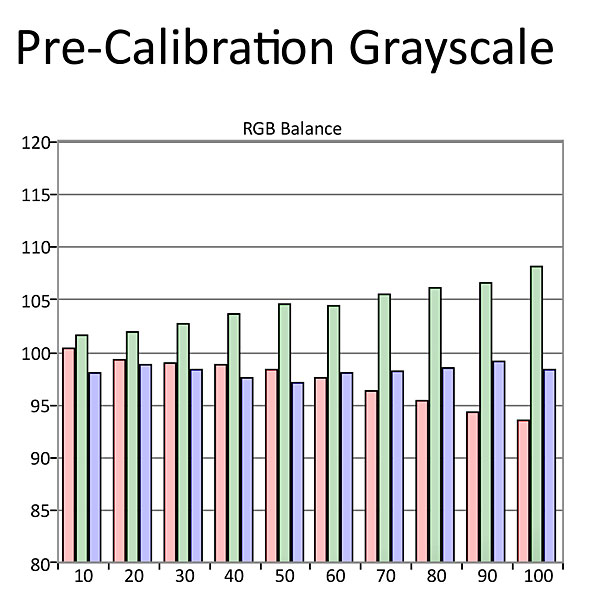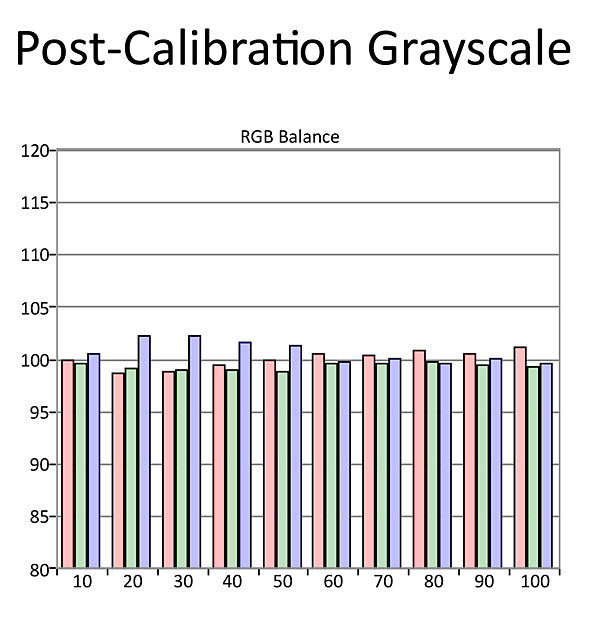Samsung QN65Q8FN LCD Ultra HDTV Review Test Bench
Pre-calibration measurements were made with the Samsung 65Q8FN’s Movie picture mode active. Post-calibration measurements were made in the same mode. Post-calibration, the set’s light output measured 40.6 foot-lamberts (ft-L) on a 100% white window pattern, and 0 ft-L on a full-black pattern, effectively providing infinite contrast ratio. This was due to the Samsung’s non-defeatable Local Dimming feature fully switching off its backlight, which was the case with all three Local Dimming settings.


Before calibration, the Samsung’s Warm 2 color tone preset with the Auto Color Space setting active mode displayed average grayscale tracking, with the Delta E averaging out to 2.9. After calibration using the 2-point White Balance adjustments, that number improved substantially to 0.4, with a high of 0.8 at 40% brightness. (Delta E is a figure of merit indicating how close the color comes to the standards, either D65 for the white point or the color coordinates for each of the primary and secondary colors that define the color gamut under test. Values below 3 are generally unnoticeable.)
With the default settings active in Movie mode, the Samsung’s color point measurements were accurate across the board, with the Delta E averaging out to 2.2. Post-calibration, the Delta Es dropped to 0.65—a vanishingly low number.
With the set’s BT.1886/0 Gamma preset selected, pre-calibration gamma closely tracked the target for most of its range, averaging out to 2.4, with a low of 2.2 at 100 IRE. Post-calibration, gamma measured a consistent 2.2 across the full brightness range.
HDR measurements of the 65Q8FN revealed the same “infinite” contrast performance due to the set’s local dimming feature shutting the backlight off. Measured using the CIE 1976 uv standard, P3 color space coverage was a very impressive 98.78%.
Post-calibration in Movie mode, The HDR peak white levels with 100% luminance windows measured (in nits) 714 at 2%, 835 at 5%, 785 at 10%, 718 at 25%, and 588 at 100%.
Picture uniformity was mostly good: a slight amount of screen “clouding” could be seen on dark gray full-field test patterns, but I didn’t notice a similar effect when viewing regular programs. As with most other LCD displays, picture uniformity was reduced when viewed from off-axis seats, although screen reflectivity in bright lighting conditions was minimal. Our video processing tests revealed excellent performance, with the 65Q8FN passing the full set. —A.G.



























































